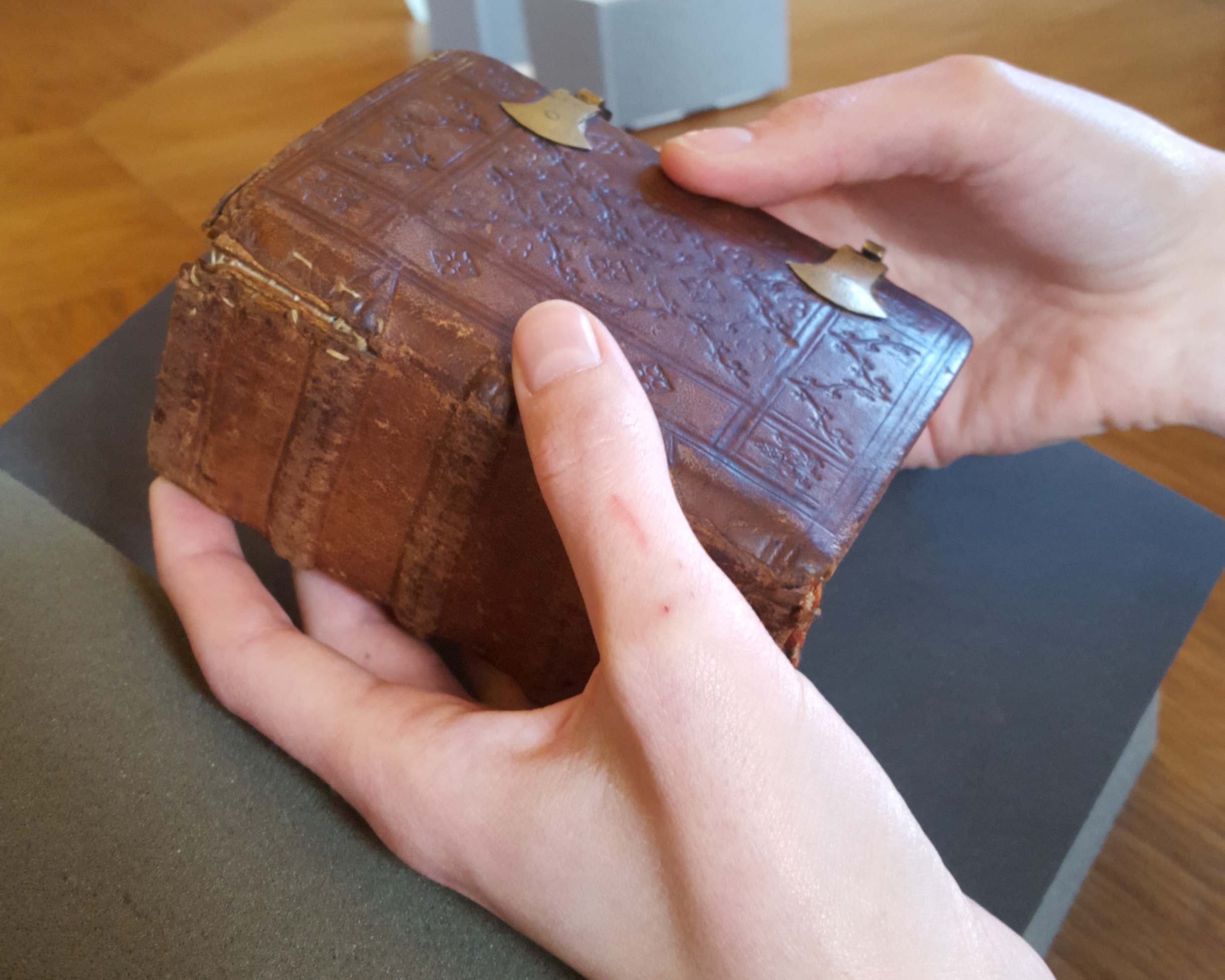By Luise Morawetz
After learning about different methods and difficulties of conservation (visit the Masterclass on Materiality post to read more about this part of the session), we got the chance to look at some manuscripts and to learn about the specifics of their materiality. What was especially intriguing for me was seeing the manuscript MS. Don. e. 248. Professor Henrike Lähnemann and Emma Huber are currently working on a digital edition of this manuscript, and I am contributing to editing and transcribing the text. MS. Don. e. 248 is a personal prayer book written and illustrated by Margaret Hopes, a nun of the Cistercian abbey of Medingen, in around 1500. It contains the Psalms as well as some other prayers. The little drawings she added at the margin of the manuscript, the golden initials and rich illustrations show how important it was for her to give the religious content a precious form (for deeper insights into the history and meaning of the manuscript, watch the Inaugural Lecture of Professor Lähnemann).
A digital version of the manuscript is available at the Bodleian Libraries Website. The images which have great quality and resolution were very useful for me to transcribe the text. The possibility to zoom in on the many details comes in handy when trying to figure out certain characters, for example, u or n which are looking very similar and can just be kept apart, if at all, by tiny lines that do or do not exist. Through the digital version, one can also appreciate the rich illustrations. Surprisingly, even the texture of the parchment is preserved in the images. Visible pores and uneven parts are giving the impression of a slightly rough surface that makes the online manuscript tangible and realistic.
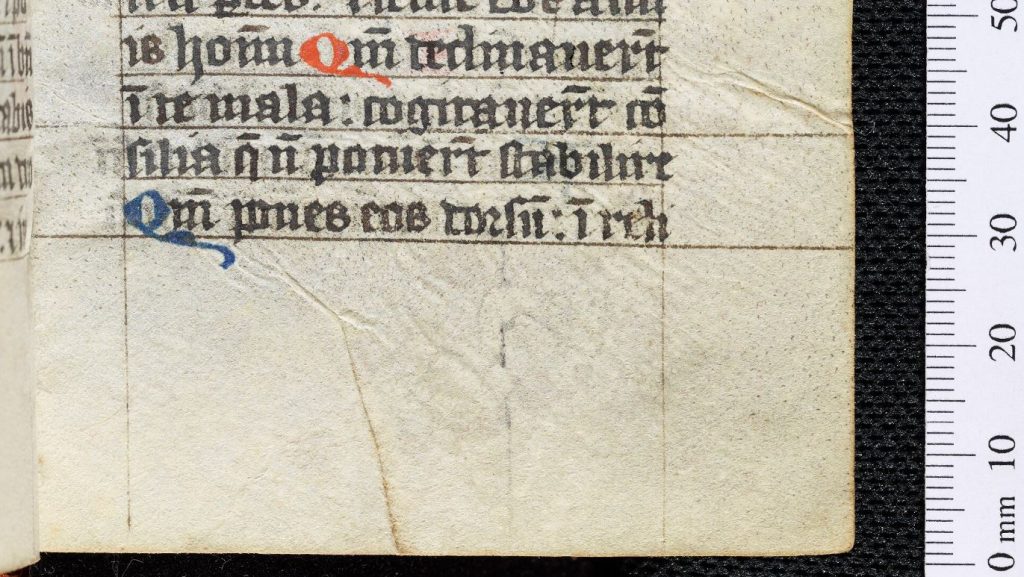
Still, getting the actual manuscript in my hands changed my impression of it completely. One could say, the digitized images are almost too good. While looking at them, I got the feeling that the manuscript is a perfect, flawless object – even the little defects like corrected words or holes in the parchment are presented by an ideal image almost as if they had been included in the book with the intention to create a piece of art. In contrast, only by seeing the manuscript in real life, I could realise to what extent it actually is an object of utility.
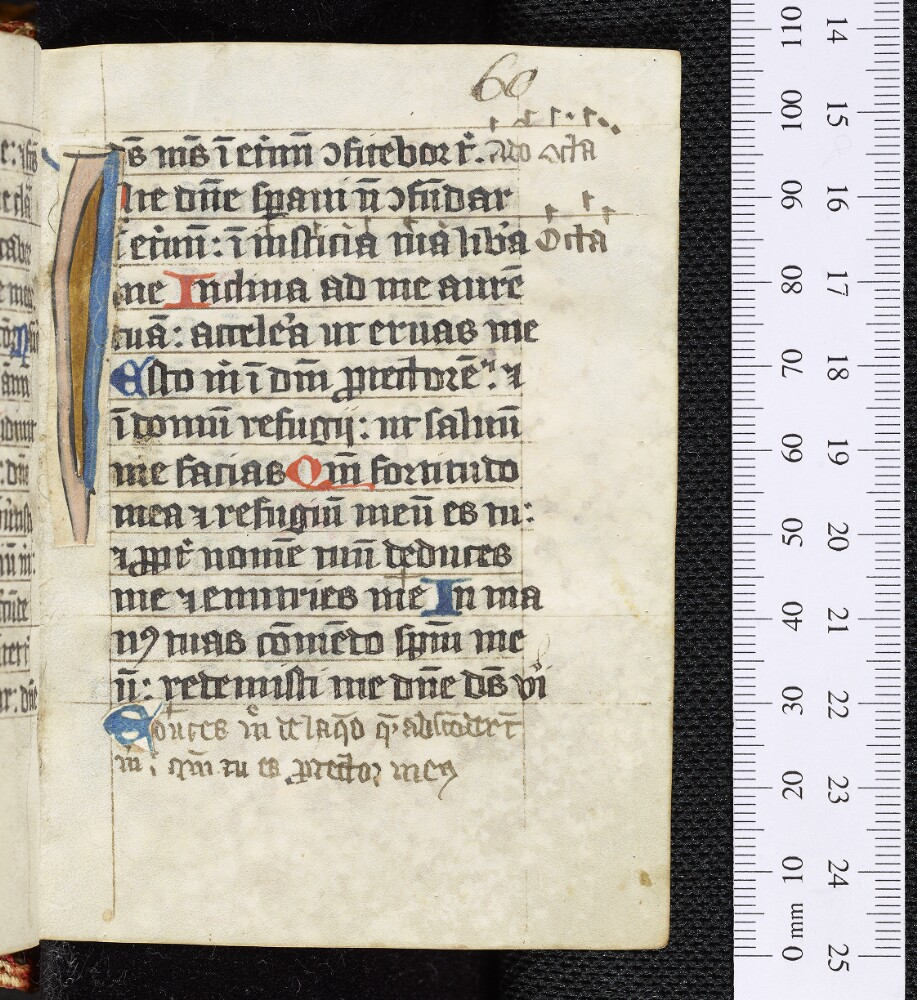
At first, the size of the book astonished me. Three books were presented in the session and MS. Don. e. 248 was the smallest one on the table. Although a ruler is included in the digitised images, the pure presence of the size indication does not give an impression about the actual measurements. The possibility of enhancing the image online to more than life-size contributes to the confusion. The benefits of digitising are at this point covering the characteristics of the real object.
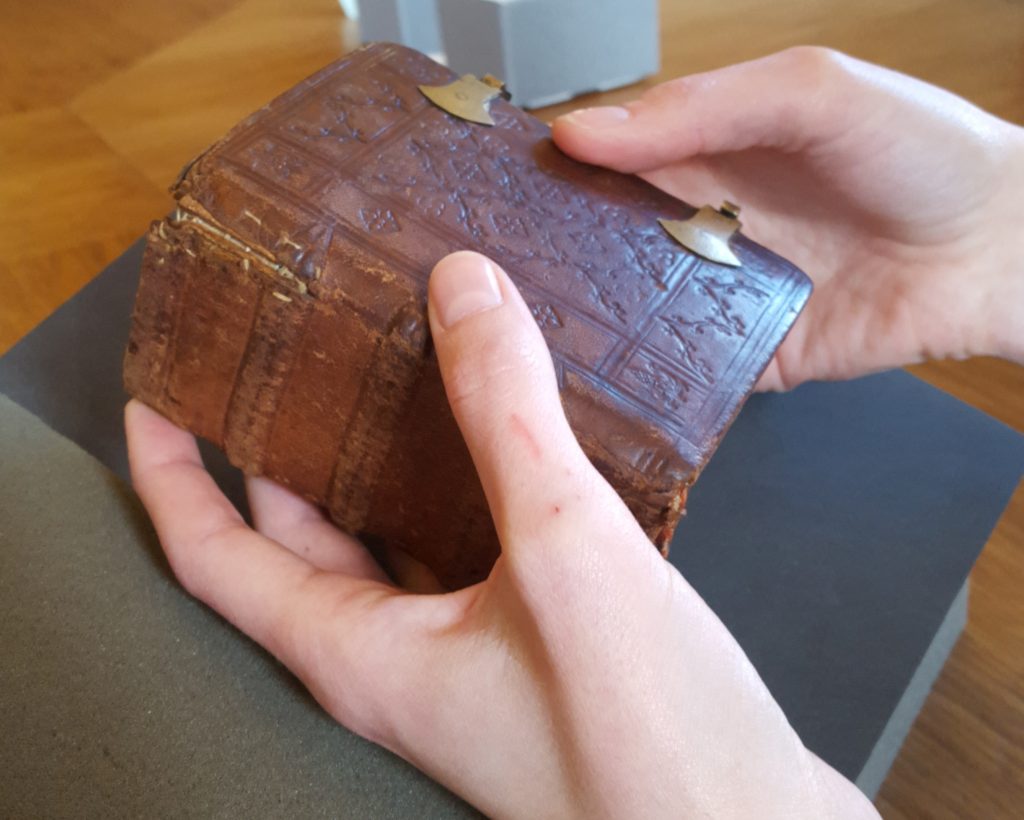
The format of the manuscript is smaller than a hand but the great number of pages are making it very thick, so it is necessary to use both hands to handle it and it has a notable weight (about two medium-sized smartphones, to give an impression). That must have been the case for Margaret Hopes as well when she used the book to pray. Opening the book, with the appropriate care so the back does not get overstrained, revealed the tiny script and delicate images.
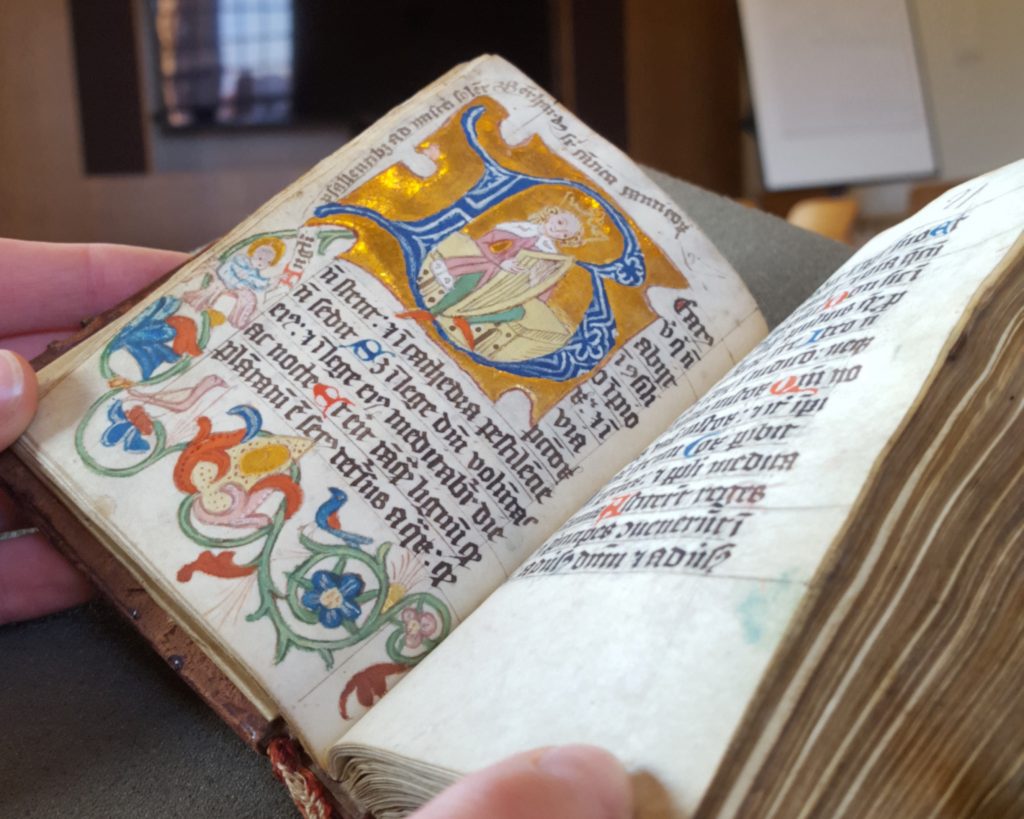
Only seeing the real size of the pages can give an impression about how difficult it had to be to write it. It is hard to imagine how much effort and devotion must have been put into this work. And although the illustrations can be observed in the digital images, their liveliness only really emerges by turning the pages of the manuscript. Then it is almost as if the saints, animals and tendrils are moving on their own, an impression evoked by the slight variation of the tone of the bright colours and the shimmering gold in the changing incidence of light.
And this is exactly what the digital images cannot reproduce: the manuscript is not a cold, inanimate object, it was produced with care and used with dedication, it lived with its owner for whom the precious content had to be reflected by the appearance. Only holding it in my own hands could give me a tiny glance of its rich history and meaning.
